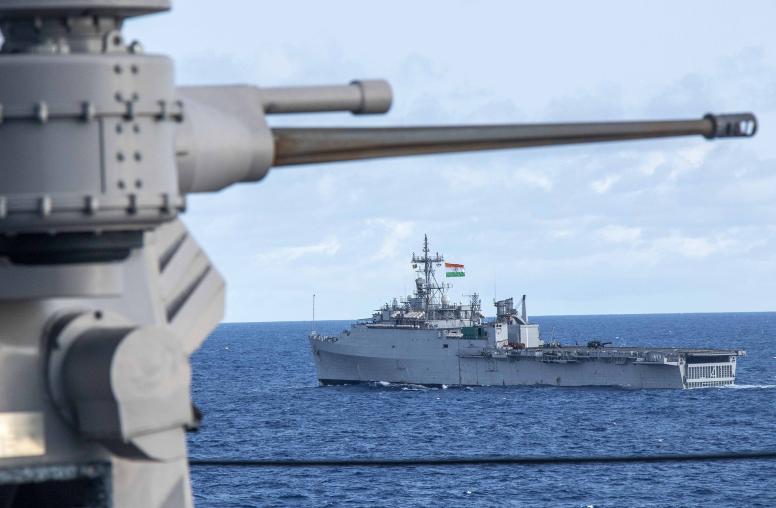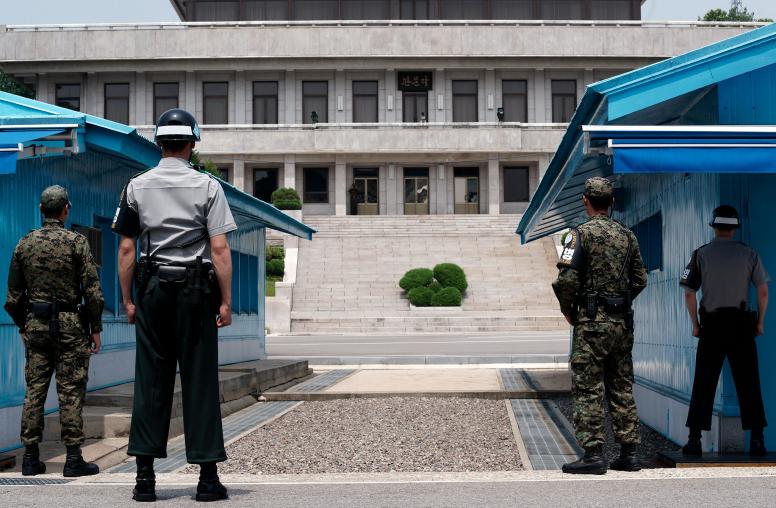Final Report and Recommendations of the Senior Study Group on Peace and Security in the Red Sea Arena
Between May 2019 and September 2020, the United States Institute of Peace convened a bipartisan senior study group to consider the factors that have reshaped the Red Sea arena. The study group determined that, in recent years, the geopolitical and geo-economic dynamics of the Horn of Africa have become tied to the Middle East and broader Indian Ocean in a manner unprecedented in the last century. However, U.S. strategy in this evolving environment has struggled to keep pace with these interconnected, complex, and transregional dynamics and to account for the region’s increased relevance to U.S. interests. The final report of the senior study group defines U.S. interests within a hierarchy of priorities to assist policymakers in calibrating diplomatic, development, humanitarian, and security interventions and provides recommendations for defending and advancing these interests.
Executive Summary
In the last five years, the geopolitical landscape of the Red Sea arena has been fundamentally reshaped. The Horn of Africa is now an integral part of and in fact the link among the security systems of the Middle East, the Indo-Pacific, and the Mediterranean by virtue of the strategic importance of and competition for influence over the Red Sea and the states that border and depend upon it for trade and transit. Middle Eastern states are asserting themselves in the Horn of Africa in ways unprecedented in at least a century, and the Red Sea arena is becoming increasingly militarized. As in the eastern Mediterranean, the export of Middle Eastern rivalries into the Horn of Africa—with the United Arab Emirates (UAE), Saudi Arabia, and Egypt contesting Turkey and Qatar for dominance—is fueling instability and insecurity in an already fragile, volatile, and conflict-prone region.
In addition, both Ethiopia and Sudan are navigating the most significant political transitions since the end of the Cold War in which the fundamental assumptions underlying each state’s political structure and governance model are being reexamined and challenged. The transitions in Ethiopia and Sudan present an opportunity to set the region on a transformative new trajectory toward reform and stability, yet they also carry a risk of state failure that, given these states’ combined population of more than 150 million, would send a tidal wave of instability across Africa and the Middle East.
The protest movements that catalyzed the transitions in Ethiopia and Sudan illustrate a demographic explosion in which an entire generation is coming of political age and questioning the credibility, legitimacy, and efficacy of their governments in meeting their aspirations for basic security and economic prosperity. This is set against the population estimates that project the Horn of Africa will grow by 44 percent in the next fifteen years and by 87 percent in the next thirty. And though the full extent of the health impact of the COVID-19 pandemic is as yet unclear, the Horn of Africa’s extant vulnerabilities suggest that the pandemic could result in lasting damage.
Although U.S. military commitments, security investments, and humanitarian and development assistance remain significant, the United States has been withdrawing from its role as the dominant external political power in the Red Sea arena. In this environment, the United States needs a new strategic framework to successfully advance and defend its interests. This study recommends four pillars that should comprise such a framework.
Four Pillars of a U.S. Strategic Framework for the Red Sea Arena
A political and diplomatic strategy to inoculate the Horn of Africa against the fallout of Middle Eastern rivalries
- Undertake a sustained diplomatic campaign to broker a détente in the Horn of Africa between the rival Middle Eastern blocs, remove that region as a battleground for their competition, and preserve the sovereignty of the Horn’s states
- Catalyze a new regional architecture that minimizes contestation and maximizes cooperation
Structural reforms to overcome the bureaucratic seams within the U.S. government
- Designate a special envoy with responsibility for the Red Sea arena
OR
- Designate the deputy secretary of state as the interagency lead for developing and executing an integrated strategy on the Red Sea arena
IN EITHER CASE
- Establish an interagency policy committee (IPC) on the Red Sea arena, co-chaired by the National Security Council senior directors for Africa and the Middle East
Realignment of U.S. assistance to promote inclusive, legitimate governance and economic growth
- Designate the Horn of Africa as a priority region under the Global Fragility Act (2019)
- Require a five-year Integrated Regional Strategy for the Red Sea arena encompassing the State Department, Defense Department, and USAID
- Designate the USAID administrator as the president’s special assistance coordinator for the Red Sea and establish a USAID Red Sea task force
- Reinvigorate the ministeriallevel "Tidewater Group" plus the U.N., the AU, IGAD, the IFIs, and the Gulf states with a specific focus on the Red Sea
- Establish a G20 working group on debt relief for the Horn of Africa to catalyze a dialogue among Paris Club and non-Paris Club creditors
- Designate the Horn of Africa as a priority region by the Development Finance Corporation
- Explore qualified industrial zones as mechanisms for promoting regional cooperation among Red Sea states
Active congressional engagement
- Strengthen coordination among the relevant congressional bodies on both a transregional (i.e., Africa and Middle East) and interdisciplinary (i.e., foreign affairs, armed services, appropriations) basis
- Establish reporting requirements on the destabilizing actions by Middle Eastern states in the Horn of Africa
- Encourage bipartisan congressional champions to provide particular support to the transitions in Ethiopia and Sudan
About the Report
In recent years, the geopolitical and geo-economic dynamics of the Horn of Africa have become tied to the Middle East and broader Indian Ocean in a manner unprecedented in the last century. U.S. strategy in this evolving environment has, however, struggled to keep pace with these interconnected, complex, and transregional dynamics and to account for the region’s increased relevance to U.S. interests.
Between May 2019 and September 2020, the United States Institute of Peace convened a bipartisan senior study group to consider the factors that have reshaped the region, referred to here as the Red Sea arena; to define U.S. interests within a hierarchy of priorities to assist policymakers in calibrating diplomatic, development, humanitarian, and security interventions; and to provide recommendations for defending and advancing these interests. The most critical challenges in the region will require multilateral responses bolstered by the appropriate, region-led multilateral architecture, but only U.S. leadership can ensure that effective solutions are brought to bear in responding to shared political, economic, and security threats.
The Final Report and Recommendations of the Senior Study Group on Peace and Security in the Red Sea Arena considers the region as a shared political, economic, and security ecosystem comprised of the eight states of the Horn of Africa (Djibouti, Ethiopia, Eritrea, Kenya, Somalia, South Sudan, Sudan, and Uganda) and the states of the Middle East whose intensifying engagement is one of the most significant developments affecting the region (Egypt, Israel, the Gulf states, and Turkey). The term “arena” is used to connote both the transregional nature of this geopolitical ecosystem and the heightened militarization and competition among state actors that increasingly defines it.



